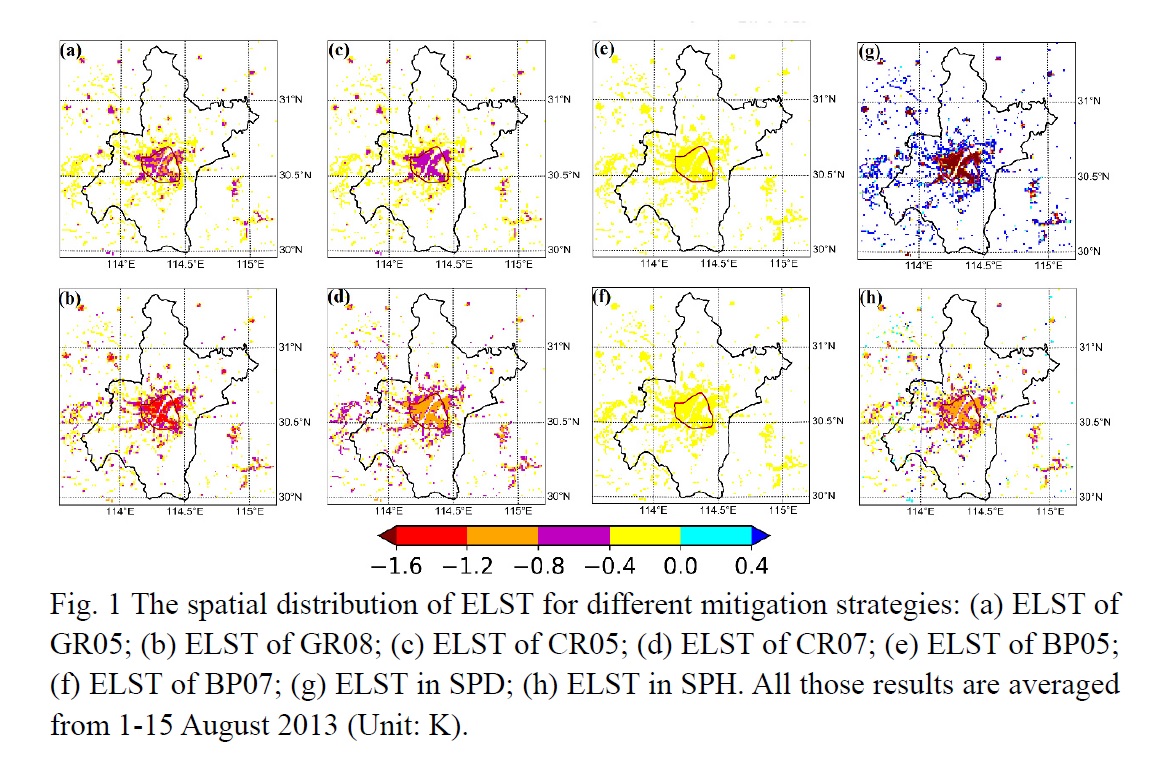Graphical Abstract
Gao, M., F. Chen, H. Shen, M. Barlage, H. Li, Z. Tan, and L. Zhang, 2019: Efficacy of possible strategies to mitigate the urban heat island based on urbanized High-
Resolution Land Data Assimilation System (u-HRLDAS). J. Meteor. Soc. Japan, 97, 1075-1097.
https://doi.org/10.2151/jmsj.2019-060
Graphical Abstract with highlights
Plain Language Summary: This paper took Wuhan (one of the four hottest furnaces cities in China) as an example to explore several strategies for mitigating the surface urban heat island (UHI) measured by the land surface temperature, including the use of green roofs, cool roofs, bright pavements, and alternations in urban building patterns. The offline urbanized High-Resolution Land Data Assimilation System (u-HRLDAS) was employed to conduct 1-km resolution numerical simulations, which also accounts for the effects of abundant lakes in Wuhan on UHI evolution with a dynamic lake model. The diurnal cycle and spatial distribution of simulated UHI were analyzed under different mitigation strategies. The results of this study showed new insights in mitigating the urban heat islands for a mega city like Wuhan and provides a practical guideline for policymakers to offer a more habitable city.
Highlights:
- Employing green roofs and cool roofs are more effective in mitigating daytime UHI than the use of bright pavement.
- The maximum UHI reduction is about 2.1 K at 13:00 local time by replacing 80% of conventional roofs with green roofs. Cool roofs with albedo of 0.7 produce its maximum cooling efficacy about 1.8 K at 13:00.
- In contrast to the green roofs, cool roofs and bright pavements which are ineffective in nighttime, changing urban building pattern to mitigate the UHI is effective throughout the day.







